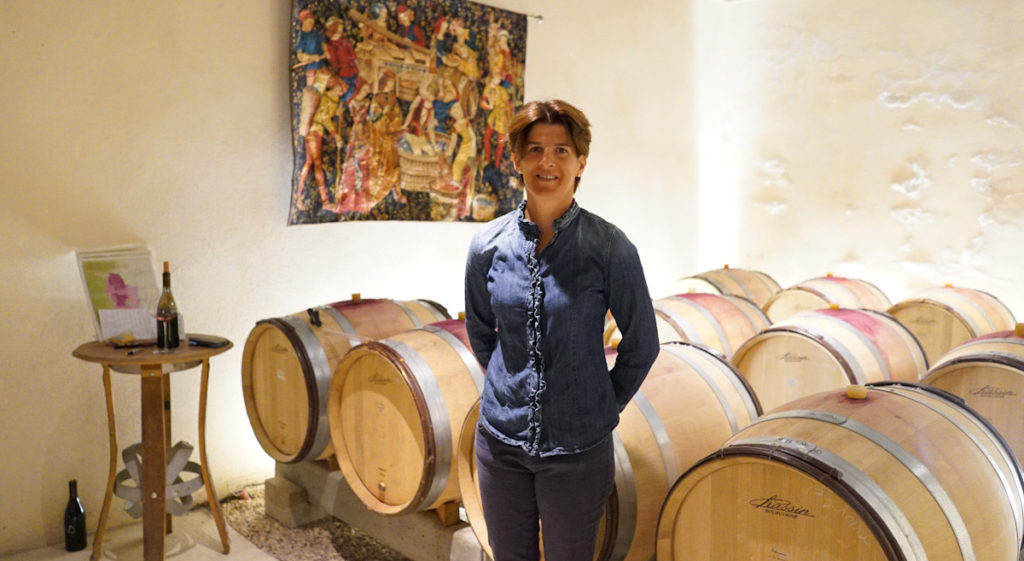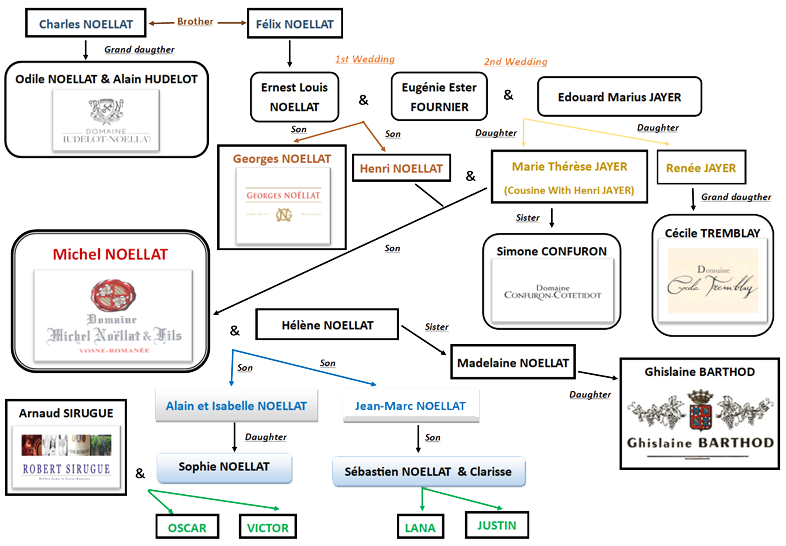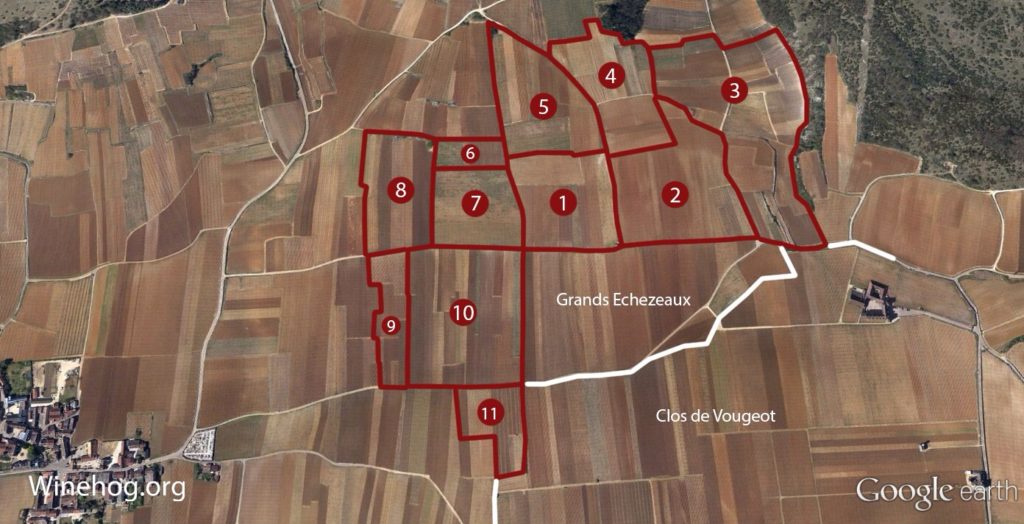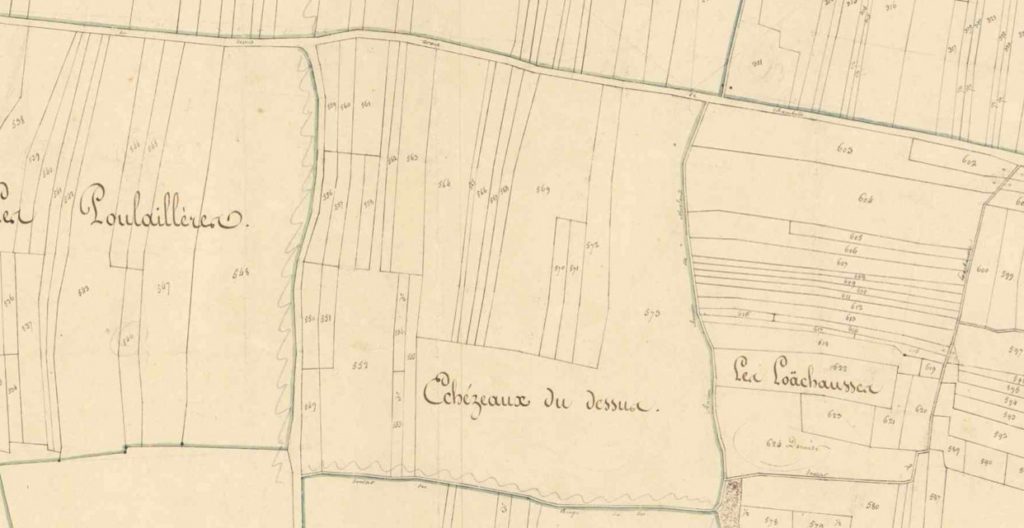It took me some time – years – to fully appreciate the wines of Cécile Tremblay. Honestly, to claim I fully understand these wines – or any Burgundy wines in fact – would be bragging. Wine is complex, and the development of each bottle is unique.
Cécile Tremblay’s wines have a unique generosity and depth, and while their definition is good, they also have a delightfully impressionistic style, with rich textures rather than precise details.

Echezéaux and Chapelle-Chambertin are her signature wines, and it’s not easy to pick a favourite between them. But since her 2010 Echezéaux really caught my attention, Echezéaux it is.
Cécile Tremblay’s vineyards in short
Cécile Tremblay began her endeavour in 2002-03 when she took over some of her family’s vineyards and started making wine.
The vineyards originally come from the Edouard Jayer estate. Edouard, Henri Jayer’s uncle, was a cooper in Nuits-Saint-Georges before World War I, and Cécile’s grandfather. In 1921, he married Esther Fournier, who came from a vigneron family, and they established their estate based on vineyards from her inheritance, gradually expanding the portfolio over the years.
Below is the rather complex family tree, shared with me by the Michel Noëllat estate.

At Edouard’s death in 1950, the vineyards were shared amongst his and Cécile’s five children. Renée, the youngest daughter, kept her vineyards and rented them out in metayage (share-cropping). Her only daughter, Marie Annick, and her husband continued to expand the estate’s holdings while keeping it under metayage. After her studies, their daughter Cécile decided to take over her parents’ vineyards, and thus was born the delightful Domaine Cécile Tremblay at the beginning of 2003.
As mentioned, the vineyards prior to 2003 were rented out to other growers. Cécile was able to take back 3 hectares initially, and will eventually take back more as the leases expire which, following her commercial success, makes hers an estate with great potential for expansion.
Echézeaux du Dessus and the other climats of Echézeaux
One of the first articles I wrote for this site was an article about Echézeaux – or more specifically the climat called Echézeaux du Dessus, the appellation’s heart.
Echézeaux in total includes 11 climats and covers 35.26 ha. It is located between Chambolle-Musigny and Vosne-Romanee, above the Clos de Vougeot and Grands Echézeaux (map below).

The 11 climats of Echézeaux are:
- Echézeaux du Dessus
- Les Poulailléres
- En Orveau
- Les Champs Traversins
- Les Rouges du Bas
- Les Beaux Monts Bas
- Les Loächausses
- Les Cruots ou Vigne Blanches
- Clos St. Denis
- Les Treux
- Les Quartieres de Nuits
Echézeaux du Dessus
The climat Echézeaux du Dessus (1) is located in the very core of the vineyard, just above Grands Echézeaux.
Echézeaux du Dessus is considered by many to be the core of the original vineyard, being the only climat to actually bear the name Echézeaux. The name derives from “chesaux,” a word of Gallo-Roman origin meaning a group of dwellings, presumably referring to an ancient hamlet. Echézeaux du Dessus means the upper part of Echézeaux, indicating that originally Grands Echézeaux was considered the lower – and larger – part of Echézeaux. This underscores the assertion that Echézeaux du Dessus was the original part of the vineyard – or at least the core of the terroir (more about this below).
Echézeaux du Dessus – its historical size
The eleven climats today included in Echézeaux were considered historically more as separate vineyards. The climat names can already be found in the first cadastral maps from 1827, where Echézeaux du Dessus had almost the same borders and area as it does currently (cadastral map below).

Moving forward to 1855, Lavalle1 mentions Echézeaux du Dessus as a premiere cru, and among the best vineyards in Flagey-Echézeaux. The area of Echézeaux du Dessus was, according to Lavalle, 3.5530 ha in 1855 – almost identical to the current area. Rodier2 in 1920 confirms its 3.5530-ha area.
History of the Cécile Tremblay plots in detail
Cécile Tremblay’s plots originate from the Jayer and Noëllat families, an origination that encompasses a large proportion of Vosne vineyards as a whole.
Presumably, the plots were acquired after 1920, as Rodier doesn’t mention either Jayer or Noëllat as owners of Echézeaux du Dessus. It’s most likely that the plots were acquired by Edouard Jayer (1881-1950)4, although they could also have conceivably come from the Noëllat side of the family.
Edouard Jayer was married twice, first in 1906 to Anne-Marie Baudement, with whom he had two children. Then in 1920, he married Esther Fournier, with whom he had a daughter, Renée Jayer (1923-2010)4.
Esther Fournier had previously been married to Ernest-Louis-Eugene Noëllat (1881-1916), and they had two sons: Henri Ernest Eugene Noëllat (1907-82) and Georges Roger Noëllat (1914-82). Ernest-Louis-Eugene Noëllat was the brother of Charles Felix Noëllat (1880-1939), who founded Domaine Charles Noëllat4.
In all, Edouard Jayer had five children when he passed away in 1950 – Henri Ernest Eugene Noëllat, Georges Roger Noëllat, Marie-Therese Jayer, Simone Jayer, and Renée Jayer.
To make matters even more complex, Marie-Therese Jayer married her cousin-by-marriage Henri Ernest Eugene Noëllat in 1926 (they were not closely related genetically), to make the eventual inheritance even more thorny.
In the end, the holdings were somehow divided among these children in 19504 after Edouard Jayer’s death.
Cécile Tremblay’s plot comes from Renée Jayer’s side of the family. Renée, Edouard’s youngest daughter, herself had one daughter, Marie Annick, who is Cécile’s mother.
In 1950, when the vineyards were divided among the five children, Renée leased her portion to sharecroppers. Her daughter Marie Annick and her husband enlarged the holdings in 1986, but kept them leased out to sharecroppers, a situation that would continue, as mentioned, until Cecile decided to take over the family estate.
The rest of Edouard’s holdings were divided among Marie-Therese Jayer, Henri Ernest Eugene Noëllat, Simone Jayer, and Georges Noëllat. There is no evidence that Georges Noëllat received a plot in Echézeaux du Dessus – he could have received other parcels instead.
You need to login as a Premium subscriber to read the rest of this article. If you are not a Premium Subscriber, use the subscribe function and sign-up.

 - A true vin d’émotion – a Burgundy of passion
- A true vin d’émotion – a Burgundy of passion - A truly hedonistic wine – lively and enjoyable
- A truly hedonistic wine – lively and enjoyable - A vivacious wine for pure indulgance
- A vivacious wine for pure indulgance - A potential vin d´émotion - frais et léger
- A potential vin d´émotion - frais et léger
Leave a Reply
You must be logged in to post a comment.